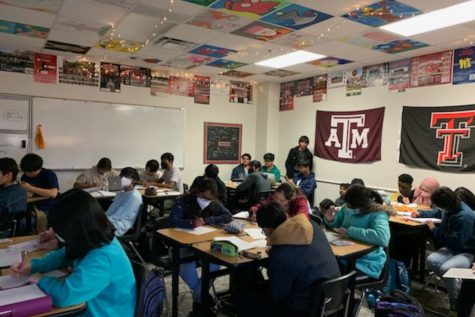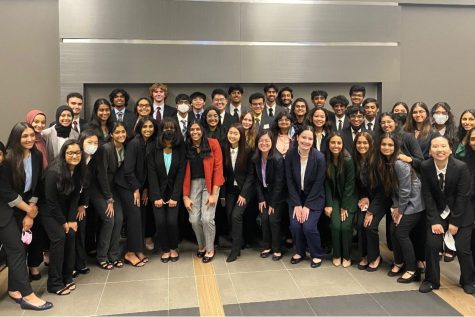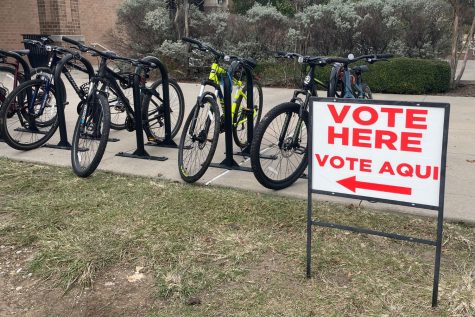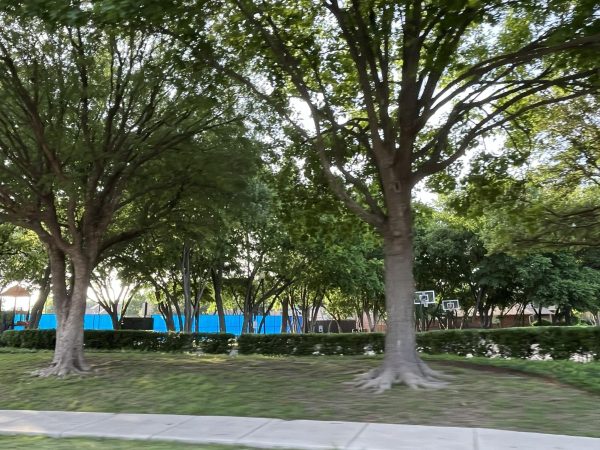Faculty reemphasize dress code policy

A student works in a classroom while simultaneously being out of dress code. Assistant principal Ashley Rainwater wants students to remember the consequences of dress code infractions.
A little more than half of the school year has passed, and most students have become accustomed to the rules and regulations of the school. However, multiple dress code violations have come to the attention of administrators.
“Kids start pushing the envelope of dress code,” associate principal Ashley Rainwater said. “And again, they get further and further and further away from the dress code.”
Issues with dress code are often correlated with the changing weather.
“As the weather gets warmer, and the Nike shorts come out, and the leggings-we’re seeing a lot of girls wearing leggings without a shirt that’s long enough,” Rainwater said.
“Technically it’s supposed to be fingertip, so think about all the girls you see with yoga pants and leggings and think about whether their shirts are fingertip length all the way around.”
The dress code violations can also extend to other campuses.
“We want to make sure that everyone is reminded of what it is and that they will be held accountable for it here, at sporting events, at school events, and when they go to the other campuses,” Rainwater said. “We have kids that come here, then go to the CTE Center and they’re not in dress code and they receive disciplinary action over there for not being in dress code.”
The CTE center enforces dress code and follows the disciplinary procedures that can be accessed on the district website.
“We enforce the district dress code policy at the center,” CTE Center assistant principal Gina Ware said. “All the information can found from the district website under the CTE addendum.”
Rainwater believes that the issue can be shaped by students seeing their peers out of dress code.
“We just want to make sure that kids are aware,” Rainwater said. “A lot of times they’ll say, ‘Well I saw a kid that wasn’t in dress code second period.’ Well, somebody may walk into school and we don’t see them and they get to second period and then everybody starts to think, ‘Well that person wore something that wasn’t in dress code, it must be okay.’”
For some students, talk of dress code is unfair.
A lot of times we’ll talk to a kid and they’ll say, ‘Well, I wore this before.’ That doesn’t mean that you were supposed to wear it before, it just meant that nobody saw you.
— Ashley Rainwater
“When the purpose of appropriate dress is to ensure that people learn without distractions, I personally disagree with the harshness of dress code,” senior Sarah Jiang said. “Especially when I see people getting caught with no distractions and people not getting caught with obvious ones.”
She has sensed a dramatic change throughout her high school career.
“I think that the APs are definitely getting more strict about dress code even though I’ve never been dress coded,” Jiang said. “People are getting penalized for having small holes in their pants.”
Jiang is not the only one who thinks the dress code is unreasonable.
“I think it could be a bit less restricted,” freshman Katie Love said. “I mean, I don’t think any guy is gonna look at a girl and be like, ‘Oh God. Shoulders.’”
Although there are many factors contributing to the greater attention being paid to dress code, Rainwater considers the issue to be based on a common misconception.
“A lot of times we’ll talk to a kid and they’ll say, ‘Well, I wore this before,’” Rainwater said. “That doesn’t mean that you were supposed to wear it before, it just meant that nobody saw you.”
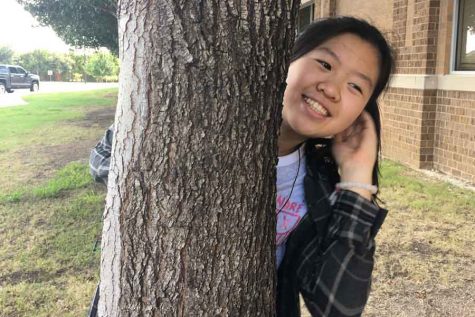
Megan is a junior who joined Wingspan her freshman year. In her free time, she likes to eat and sleep (not at the same time) and cry at the amount of work...



